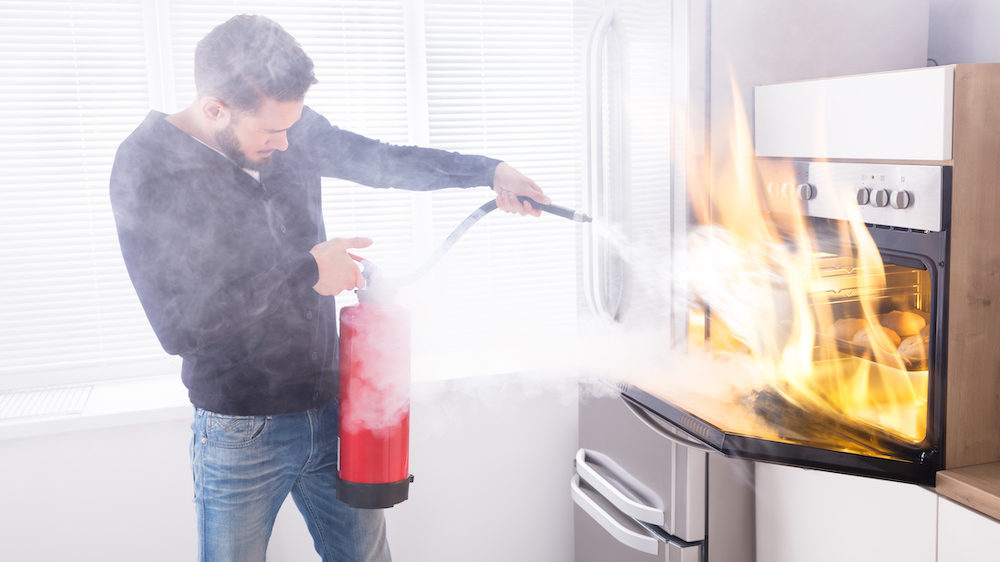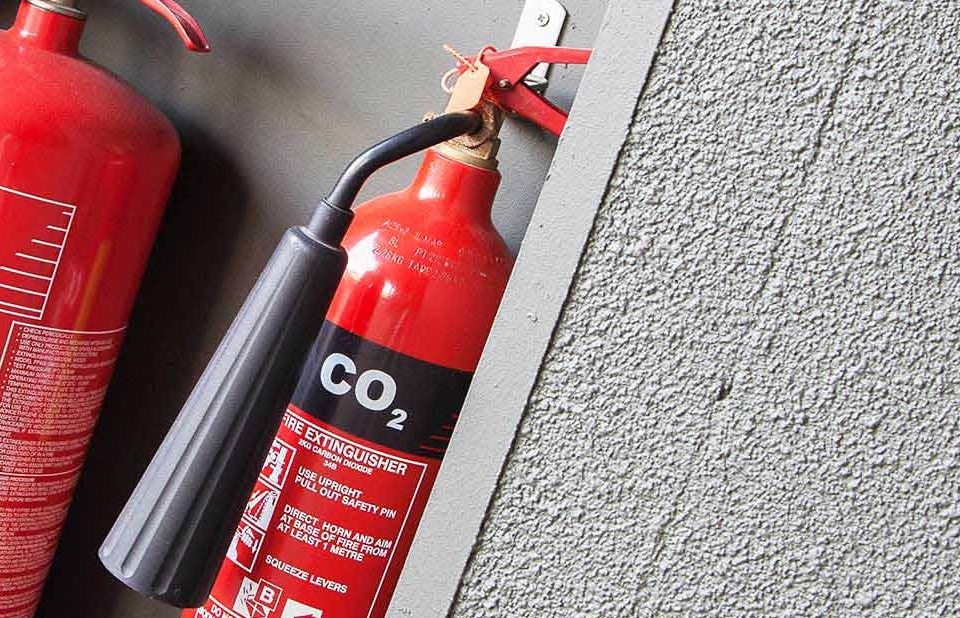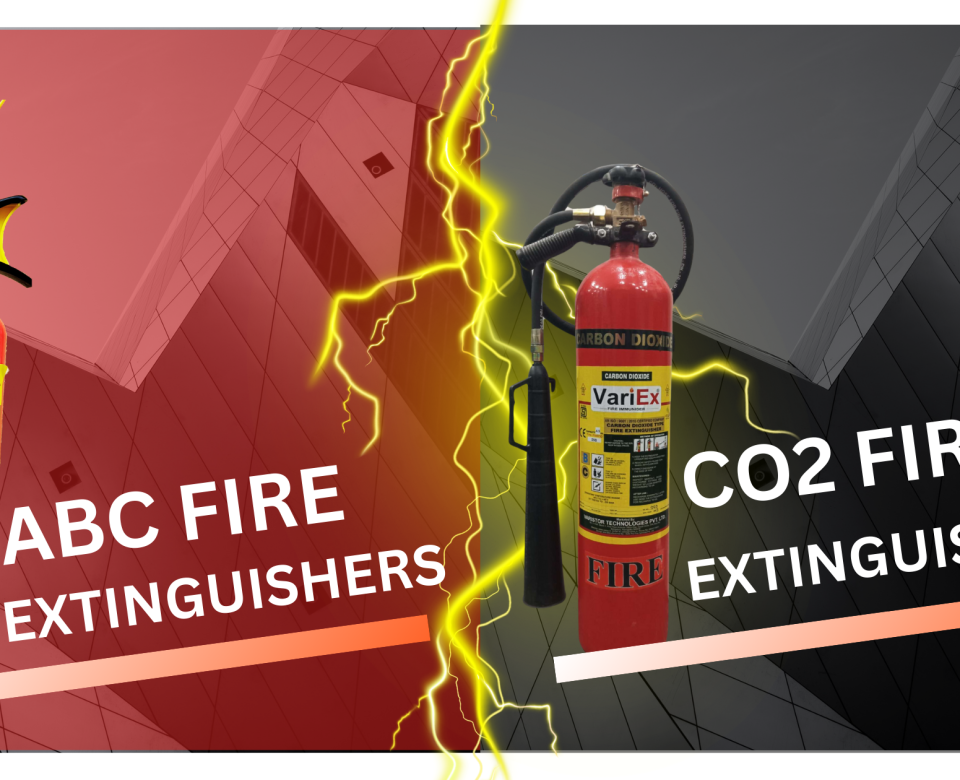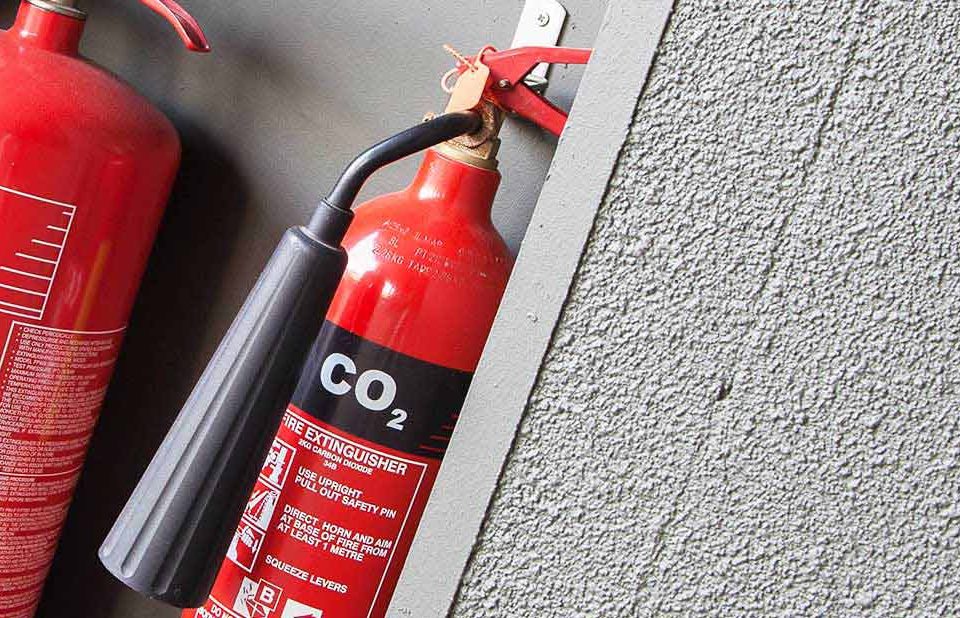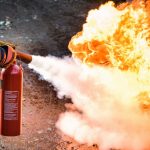
Fire Extinguisher: What Type Will Put Out a Grease Fire
October 15, 2025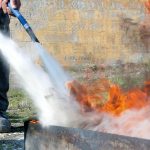
Can You Use an ABC Fire Extinguisher on a Grease Fire?
October 27, 2025Do you know which fire extinguisher could actually make your kitchen fire worse? Kitchen fires are one of the most common household accidents and can quickly turn dangerous if not handled correctly. In the busy environment of a kitchen, with open flames, hot oil, and electrical appliances, the risk is always present. That’s why choosing the right fire extinguisher for your kitchen is not just a good idea, it’s a necessity for your safety and peace of mind.
Not all fire extinguishers are created equal. Some types designed for general fires may not work and could even worsen a kitchen fire. Understanding which extinguisher suits your home kitchen can protect your loved ones and property from irreparable damage.
Understanding Fire Classes
Fire safety experts classify fires into different classes based on the material burning, and using the right extinguisher depends on knowing these classifications:
- Class A fires involve ordinary combustibles like wood, paper, and cloth. These are common but less frequent in the kitchen.
- Class B fires involve flammable liquids such as cooking oil, grease, gasoline, or other liquids used in homes.
- Class C fires are centered around live electrical equipment such as microwaves, toasters, or refrigerators.
- Class K fires specifically involve cooking oils and fats, which are common in kitchens, especially commercial ones but can also be relevant at home.
For kitchens, Classes B, C, and K are the most critical because grease and oil fires behave differently than regular fires and are more difficult to control.
Common Fire Hazards in Home Kitchens
Home kitchens are vulnerable to several fire risks:
- Grease and Oil Fires: These can ignite quickly when hot oil is left unattended on the stove or overheats.
- Electrical Appliance Fires: Faulty wiring in toasters, microwaves, or other kitchen electronics can spark fires.
- Gas Leaks: Gas stoves are common, and gas leaks or accumulation of flammable gases near the stove increase fire hazards.
- Overheated Cooking Oil: Left unattended, oil can reach its flashpoint and burst into flames.
- Clutter Near Heat Sources: Flammable materials like kitchen towels, paper towels, and plastic containers can catch fire easily around the stove.
Knowing these hazards helps you to be cautious and prepared to respond quickly.
Types of Fire Extinguishers Explained
Different fire extinguishers use various substances to put out fires. Here’s a closer look at the main types and which fires they handle:
- Water Extinguishers (Class A): These use plain water to cool down fires involving wood, paper, or cloth. However, they should never be used in kitchens because water can spread grease fires or cause electrical shocks.
- Foam Extinguishers (Class A & B): Foam works by forming a blanket over the fire to cut off oxygen. While effective for liquid fires, they are not suitable for electrical fires or grease fires in kitchens.
- CO₂ Fire Extinguishers (Class B & C): These release carbon dioxide gas, which displaces oxygen to suffocate the fire without leaving residue. Ideal for electrical fires and safe around most kitchen equipment, CO₂ extinguishers are excellent for handling appliance fires safely.
- Dry Chemical Extinguishers (ABC): These multipurpose extinguishers use powders to interrupt the chemical reaction of the fire. They work well across different fire classes, including combustibles, flammable liquids, and electrical fires, making them very popular for home use.
- Wet Chemical Extinguishers (Class K): Designed for fires that involve cooking oils and fats, these extinguishers cool the fire and form a soapy foam layer to prevent re-ignition. Common in commercial kitchens, they may be less common in home kitchens unless heavy frying is frequent.
The Best Type of Fire Extinguisher for Home Kitchens
For most homes, the Dry Chemical (ABC) fire extinguisher stands out as the best choice. It addresses several fire classes relevant in kitchens, including grease fires and electrical fires, effectively smothering flames and breaking the fire’s chemical reaction.
The CO₂ fire extinguisher can serve as a valuable secondary extinguisher, particularly for appliances and electrical equipment, because it leaves no residue and won’t damage sensitive electronics.
If your kitchen often involves frying with large amounts of oil, or you cook professionally at home, a Wet Chemical extinguisher might be a useful addition for specialized grease fires.
Fire extinguishers come in different forms, such as the commonly used fire extinguisher cylinder and innovative products like the fire extinguisher ball. The fire extinguisher ball is an easy-to-use, automatic device that can be thrown into a fire to release extinguishing agents. Considering fire extinguisher ball price in Pakistan, it offers a convenient option alongside traditional cylinders, especially in small kitchens.
Safety Tips for Using a Fire Extinguisher in the Kitchen
When using any fire extinguisher, follow the proven PASS method:
- Pull the safety pin or locking mechanism.
- Aim the nozzle at the base of the fire, not the flames.
- Squeeze the handle to release the extinguishing agent.
- Sweep the discharge from side to side until the fire is out.
Important reminders:
- Never use water on grease or oil fires as it causes flames to spread rapidly.
- Keep the extinguisher visible and accessible; don’t hide it behind appliances.
- If a fire grows too quickly or is uncontrollable, evacuate immediately and call emergency services.
Maintenance and Replacement Tips
Maintaining your fire extinguisher is essential to ensure it works when you need it:
- Check the pressure gauge monthly to make sure it’s in the operational range.
- Inspect for any cracks, dents, or corrosion on the fire extinguisher cylinder.
- Replace or recharge the extinguisher after any use, even if it’s a small amount discharged.
- Keep track of the manufacture and expiry dates; most extinguishers have a lifespan of 5 to 15 years.
- Store the extinguisher near an exit door in the kitchen for quick access while leaving the area.
Additional Kitchen Fire Safety Equipment
Besides fire extinguishers, consider these essential items in your kitchen safety plan:
- Fire Blanket: A portable fire blanket can smother small fires or wrap around a person whose clothing catches fire.
- Fire Bucket: A bucket filled with sand can be a useful backup, especially for small grease fires.
- Smoke Detectors: Detection early is key, ensure your kitchen and surrounding rooms have working smoke detectors to alert you immediately.
Combining these tools with a good fire extinguisher improves your overall safety.
Understanding Fire Extinguisher Gases
You might wonder, which gas is used in fire extinguisher devices? Different types use different gases:
- CO₂ extinguishers use carbon dioxide gas to suffocate fires safely without residue.
- Dry chemical extinguishers employ powders that disrupt the fire’s chemical reaction.
- Wet chemical types contain special liquids designed to cool and create a barrier over hot oils.
Knowing the gas used in fire extinguisher helps you choose the right one for your needs.
Fire Extinguisher Price and Options in Pakistan
In Pakistan, prices vary depending on type, size, and quality:
- Basic fire extinguisher cylinders are affordable and widely available.
- The fire extinguisher ball price in Pakistan is slightly higher due to its convenience and automatic operation but offers ease of use.
- Investing in genuine products from trusted vendors ensures safety and compliance with local fire safety standards.
For the best deals and expert advice on fire extinguisher price or to buy reliable kitchen safety products like fire blankets, fire buckets, or car fire extinguishers, Haseen Habib is your trusted source.
Conclusion
Choosing the right fire extinguisher for home kitchens is vital for handling emergencies safely and promptly. The dry chemical (ABC) extinguisher’s versatility makes it ideal for most kitchens, while CO₂ extinguishers add extra protection for electrical fires.
Safety doesn’t end with just buying an extinguisher. Regular maintenance, proper placement, and knowledge of how to use your extinguisher can prevent serious kitchen fire disasters. Remember, a few seconds of the right action can save lives.
Stay prepared, stay safe!
FAQs
Q1: What type of fire extinguisher should I not use in a kitchen?
Avoid water extinguishers because water spreads grease fires and causes more damage with electrical fires.
Q2: Is an ABC extinguisher safe for grease fires?
Yes, the dry chemical powder in ABC extinguishers effectively smothers grease fires common in kitchens.
Q3: How often should I replace my kitchen fire extinguisher?
Check monthly for pressure and physical condition. Replace or recharge after any use. Usually, replace every 5-15 years as per manufacturer guidelines.
Q4: Where should I keep a fire extinguisher in my kitchen?
Near the kitchen exit or an accessible place that doesn’t block your escape but allows quick reach.
Q5: Can I use a wet chemical extinguisher at home?
Yes, especially if you do heavy frying, but most home kitchens are well protected by ABC or CO₂ extinguishers.
For trusted fire safety gear, including affordable fire extinguishers and fire safety accessories like the innovative fire extinguisher ball and fire blankets, contact Haseen Habib for expert guidance, quality products, and the best fire extinguisher price in Pakistan. Protect your home and family today!

